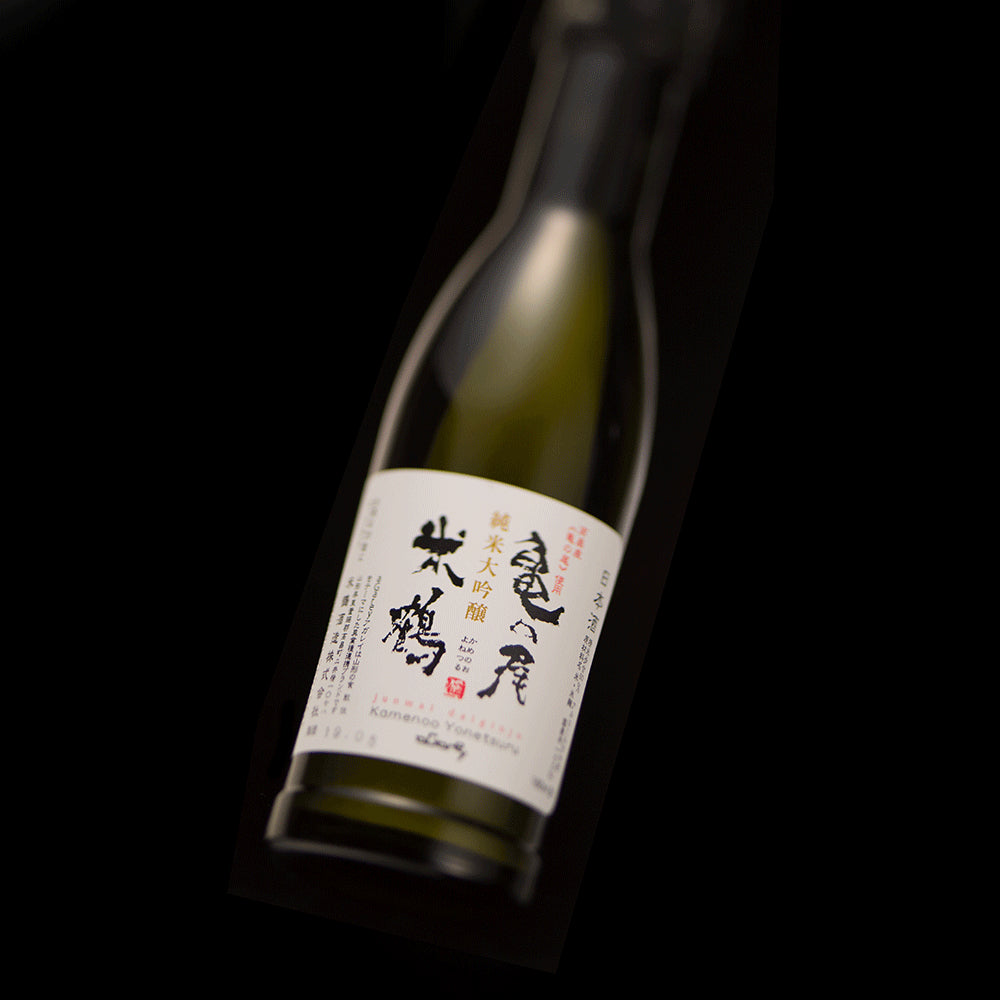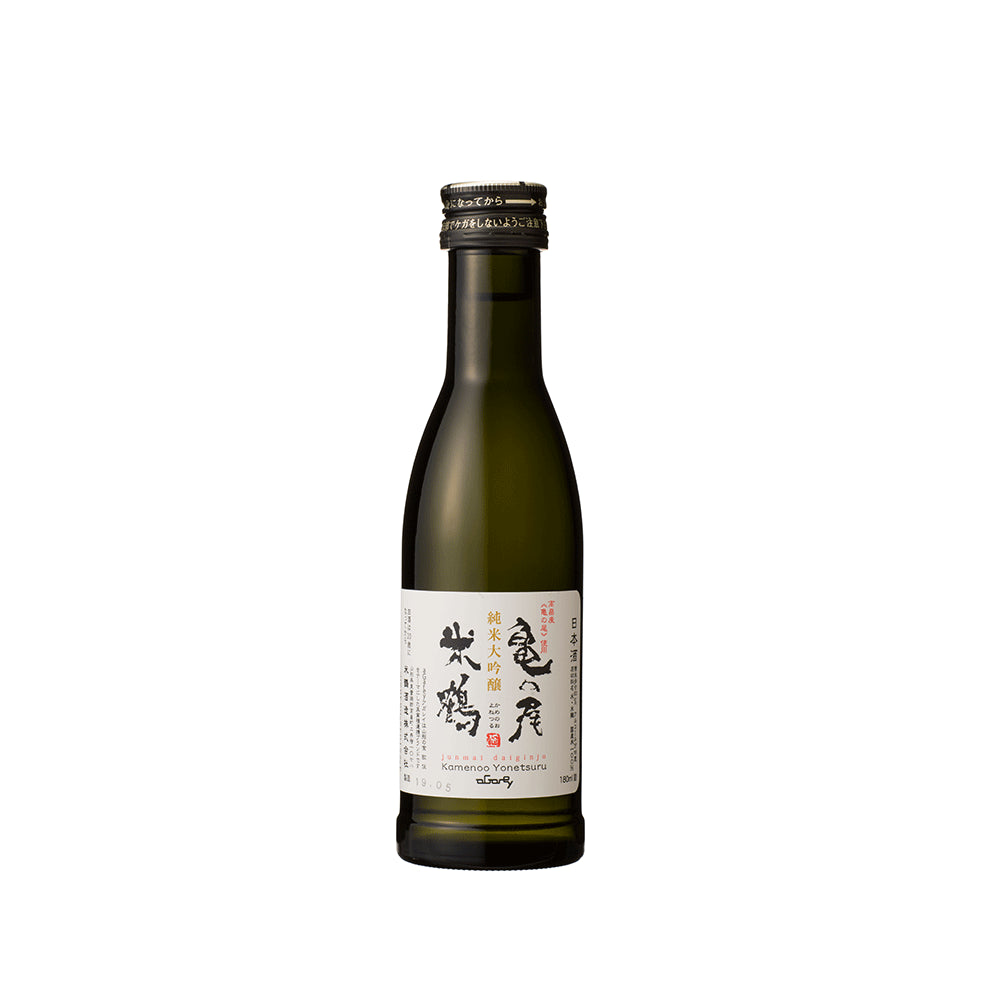-
 >
>
- Product list >
- Yonetsuru Kamenoo Junmai-daiginjo (180ml)
Yonetsuru Kamenoo Junmai-daiginjo (180ml)
詳しく見る
- *All prices shown are the product prices from the Japanpage:.
- *Product price can be shown in multiple currencies as reference values.
- *Payment should be made in Japanese yen.
- *After filling in delivery address, grand total (product price + shipping cost (packing + shipping + insurance) +tariffs & taxes) will be shown on the shipping cart page.
- *All prices shown are the product prices from the Japanpage:.
- *Product price can be shown in multiple currencies as reference values.
- *Payment should be made in Japanese yen.
- *After filling in delivery address, grand total (product price + shipping cost (packing + shipping + insurance) +tariffs & taxes) will be shown on the shipping cart page.
Awards
The Fine Sake Awards Japan2017 Daiginjo Division Gold
"Yonetsuru Kamenoo Junmai-daiginjo" is a Junmai Daiginjo brewed from 50% milled "Kamenoo", a famous rice cultivar known as "magical rice" which has been revived and used in full for the production of this sake. "Kamenoo" is a rice cultivar with excellent attributes for sake production that was first created in Yamagata prefecture in the Meiji period (1868-1912) and widely cultivated in eastern Japan. After acquiring a pure strain of seed rice stored at a research institute in Yamagata prefecture, workers at this brewery began to cultivate this rice locally from 1982 and gradually revived its use. Since then, it has formed the "Takahata Sake Rice Research Association" together with local farmers to work on the entire production process of Junmai Daiginjo from the cultivation of "Kame no O" to the brewing of the sake. This beautiful sake is distinctive for its full-bodied aroma and delicate taste which features subtle notes of grapes, pears, and bananas. The sake acquires an enhanced depth of flavor from its long fermentation process, during which it is aged at a low temperature for over 2 years in the refrigerators of the brewery. This is a valuable sake whose evolving flavors over the years will be an immense source of delight.
Pairing food proposed from Vendor
Sake-steamed clams, burdock beef rolls, seafood hotpot, seared bonito, basilico spaghetti, Viennese pot-au-feu, bacon stew, stir-fried squid in oyster sauce, gyoza soup, stir-fried bok choy, eight-treasure vegetables
About "Yonetsuru"
The name "Yonetsuru" is derived from the bowing posture of ears of rice and the locally told tale "Crane's Return of a Favor." It incorporates a wish to create a sake that conveys a sense of gratitude and is imbued with sincerity. Under the concept of brewing that starts with rice-growing, this Japanese sake uses locally produced rice to offer a refreshing balance of scent, taste, and sharpness.
Recommended temperature
- Atsukan (50 - 55℃)
- Jokan (45 - 50℃)
- Nurukan (30 - 40℃)
- Room temperature (15 - 20℃)
- Hanabie (10℃)
- Yukibie (5℃)
Type


Tag
Appearance
-
Clarity
Transparency
Hazy
-
Colour
Colorless
Dark brown
-
Intensity
Water
Deep
Nose characteristics
-
Intensity
Low
Strong
Taste characteristics
-
Light / Body
Light
Body
-
Sweet / Dry
Sweet
Dry
-
Simple / Complexity
Simple
Complexity
-
Acidity
Low
High
-
Umami
Low
High
-
Finish
Low finish
Long finish
Aroma and flavor
Detailed information
| Volume | 180ml |
|---|---|
| Size (L W H) | 5.5 x 5.5 x 17.5 cm |
| Weight | 0.4kg |
| Ingredients | Rice, Rice koji, Water |
| Region | Yamagata |
| Alcohol content | 17%vol. |
|
Sake Meter Value
|
+3 |
|
Acid level
|
+1.2 |
|
Polishing ratio
|
50% |









